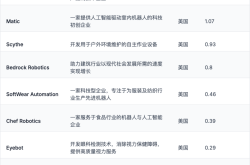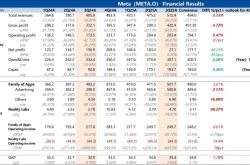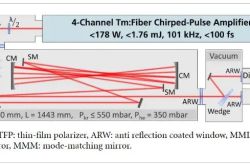NVIDIA's Market Value Plunges by $1.12 Trillion: Is the Capital Frenzy Drawing to a Close?
![]() 03/12 2025
03/12 2025
![]() 524
524
By Yang Jianyong
Over the past two years, NVIDIA has shone brightly in the capital market, acclaimed as the strongest individual stock, with a market value that once soared to $3.73 trillion. Some institutional analysts even ventured a prediction that it would breach the $4 trillion mark. Unfortunately, this year has seen a significant downturn, with a market value erosion of $1.12 trillion (roughly RMB 8 trillion) from its peak, leaving it at $2.61 trillion.
Having briefly attained the pinnacle, surpassing Apple's market value to become the world's most valuable company, NVIDIA has now witnessed its market value diminish by trillions of dollars. This decline is partly attributable to the broader US stock market's struggles, but more crucially, it stems from the impact of the DeepSeek large model, which achieves exceptional performance without relying on the traditional model of stacking computing power.
The introduction of DeepSeek earlier this year has profoundly influenced the global AI landscape, disrupting the past paradigm of computational power stacking. Its low cost and superior performance have stunned the industry, prompting tech giants to realize that high-performance AI large model services do not necessitate colossal investments in money and computing resources.
Prior to DeepSeek's emergence, the prowess of a company's AI large model was largely determined by its stockpile of NVIDIA cards. To bolster their AI competitiveness, tech giants embarked on a buying spree, leading to a supply shortage. In the past year alone, the four major tech giants—Google, Meta, Amazon, and Microsoft—invested up to $200 billion in artificial intelligence, with billions dedicated to NVIDIA chips.
Moreover, NVIDIA's high-end chips are not only exorbitantly priced but have also fueled its revenue's exponential growth. In fiscal year 2025, NVIDIA's revenue hit $130.5 billion, a year-on-year increase of 114%; its net profit surged to $72.88 billion, a year-on-year jump of 145%, cementing its status as one of the most lucrative tech companies globally.
Now, DeepSeek has overturned the previous reliance on high-end NVIDIA chips, and various industries are adapting to this new paradigm. At the chip level, due to DeepSeek's open-source nature, domestic AI chips are integrating with it, further reducing dependence on high-end performance chips like NVIDIA's, thereby fostering the development of a domestic AI chip software and hardware ecosystem.
In essence, DeepSeek is being comprehensively integrated across industries, reshaping the entire large model industry, and is poised to impact the market demand for NVIDIA's high-end chips, making it challenging for NVIDIA to replicate its past high growth trajectory.
Looking ahead, NVIDIA's outlook for future performance projects revenue for the first quarter of fiscal year 2026 to reach $43 billion, representing a year-on-year increase of 65%. Compared to the past exponential growth rates, future performance growth is beginning to decelerate, marking the end of the era of meteoric rises.
It's worth noting that the advent of DeepSeek will also accelerate the deployment of innovative AI applications across industries, potentially sustaining chip demand growth. However, this growth will no longer be contingent on NVIDIA's high-end chips. Some investors believe that DeepSeek's low cost will undermine NVIDIA's chip dominance.
Furthermore, custom AI chips represent a significant strategy for tech giants. For instance, Google's TPU is a custom product developed in collaboration with Broadcom. There are also reports of Broadcom working with Apple to develop AI servers, indicating that tech giants aim to diversify their chip supply, potentially altering NVIDIA's monopoly.
As a key player in custom AI chips, Broadcom is developing such chips with three major cloud customers. Broadcom CEO Hock Tan has stated that the custom AI chip business is expected to generate revenue of $60 billion to $90 billion by 2027, four times the current revenue. This underscores the strong demand for custom AI chips among tech giants, which can better meet their specific needs while reducing reliance on NVIDIA. Additionally, Wall Street is closely monitoring the demand for ASICs from large cloud computing companies like Google.
Finally, amidst the rapid advancement of generative AI technology, NVIDIA remains a pivotal driving force, playing a crucial role in AI applications across multiple fields. NVIDIA CEO Jensen Huang asserts that DeepSeek has ignited global enthusiasm for AI and is optimistic about the potential demand it generates for AI reasoning, which promises robust growth.
In conclusion, the large model industry is technology- and capital-intensive, requiring substantial investments to build robust AI infrastructure. While training large models still favors NVIDIA chips, particularly with the impressive demand for Blackwell, successfully capitalizing on the AI large model market opportunity and emerging as the biggest beneficiary in the generative AI era, NVIDIA also faces challenges from various fronts, signaling the potential end of its dominant position.
Yang Jianyong is a contributor to Forbes China. The views expressed are solely his personal opinions, and the content is for reference only and does not constitute investment advice.








